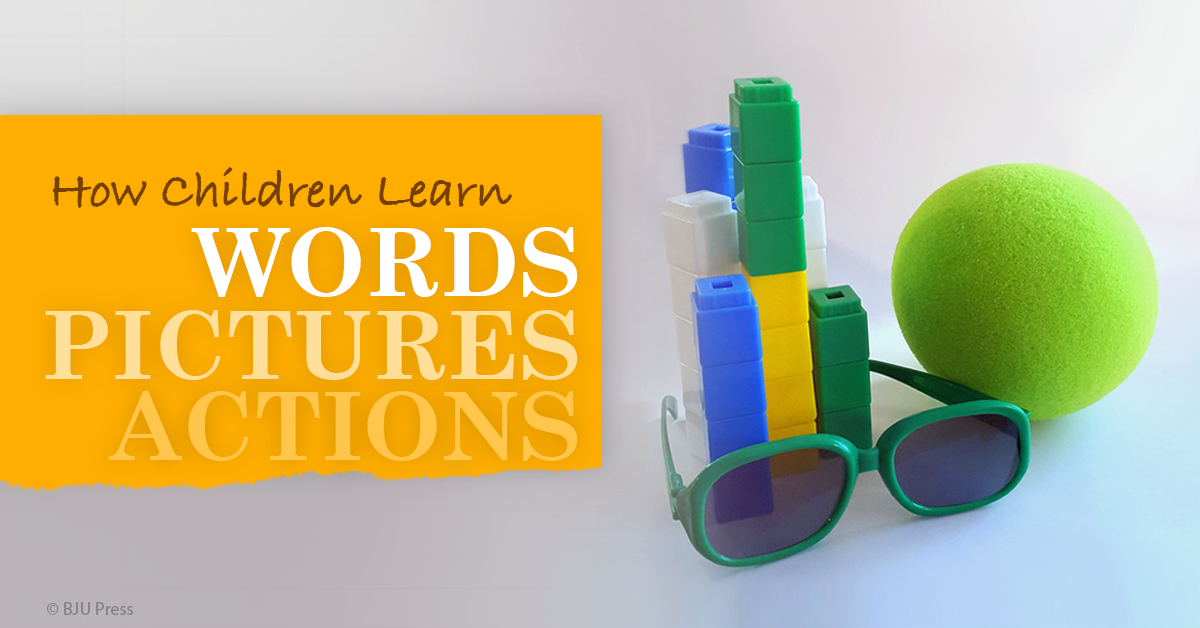I am not a teacher—I’m an artist, a “picture person.” But when our third child, Christopher, finished kindergarten without knowing the alphabet, numbers, or colors, I was determined to help my son learn. During the summer, I made the letters of the alphabet from chenille wire and tried to teach him that way. It was like trying to communicate with someone who didn’t speak my language. But the shaping of the wires into letters did seem to help him learn.
I will never forget one day when I was beginning to get discouraged about helping Christopher understand the names of the colors. We were sitting at lunch, and I picked up an orange and said to him, “Do you know what this is?”
He replied, “An orange.”
I said, “OK, now what color is it?”
I could actually see the light go on in his little head. He said, “Orange!” Yes, he got it, and the other colors came more easily after that.
Later, I started using a reading program to help him learn some of the letter sounds. I remember that he had a hard time understanding how to pronounce the short i. A hand scratching an arm was pictured with the short sound as in itch. He got that—a difficult concept made easier by a picture. The Lord was helping me to see that the media most familiar to me—pictures and three-dimensional objects—made concepts clearer to Christopher.
I worked with Chris in the evenings to make up for what he had not grasped in the classroom. The Lord graciously provided me encouragement and help through knowledgeable people at BJU Press. I used BJU Press textbooks, kept a close watch on Chris’s assignments and tests, and communicated regularly with the classroom teachers.
One night Chris and I settled in to study for his Bible class. I wasn’t looking forward to the topic—Abraham, Isaac, Jacob, the wives, and the children. I personally have a difficult time studying the Old Testament because I can’t remember names. But there, in the Bible Truths worktext, was a family tree complete with small pictures of Bible-time men and women. I was reading aloud with him the names by the pictures—Abraham, Isaac, Jacob—and counting the sons—1, 2, 3, 4, 5, 6, 7, 8, 9, 10, 11, 12 sons. The twelve tribes of Israel! Seeing the names paired with the pictures and grouped as a family tree, Chris could make the connection (and both of us could remember the names). That was when I realized that art is a more effective teaching tool than I had thought.
In third grade Chris was tested for learning disabilities, but none were revealed. The tests did show, however, that he couldn’t process information given in a classroom setting when lecturing is the main method of presentation. I began to check into the ways people learn.

Auditory learners learn best by hearing. I call them “word people.” Then there are visual learners, who learn by seeing and can actually visualize and remember things as pictures in their heads. They are what I had been referring to for years as “picture people.” Kinesthetic learners, the most difficult to teach in the traditional style, may be called “hands-on” or “action people.” Our son does learn best by actually doing things. His knowledge of cars comes, I’m sure, from the time he has physically worked on cars with his dad, who is an automobile mechanic. Ever since he was age ten, Chris has been able to do a great brake job!
In grade six, Chris received the B scholarship award. He began seventh grade with a good attitude about his studies. He receives help from teachers who understand how he learns, and I continue to work with him at home. His organizational skills have improved, he knows how long he must study, and he plans ahead for that time. Past successes have motivated Chris to keep striving. Those successes have also been a real encouragement to his teachers, including my husband and me!
After recognizing Chris’s specific approach to learning, I developed a list of techniques to use in helping my kinesthetic/visual-learner son. Perhaps they may help you with your children too:
- Label pictures. The visual learner integrates the words with the picture, and he produces one unit in his brain. He will remember by actually seeing that grouping in his head. When I produced a diagram of a knight and his armor for Reading 6, I used what I had learned from helping our son. The diagram introduces unfamiliar terms so that the student will be able to read the accompanying story with understanding.
- When making study guides, type important facts and names in bold.
- Encourage highlighting while studying.
- Make graphs.
- Arrange events on a timeline so that the student can get the big picture.
- Have middle school and high school students take notes while listening, in the books if possible. The act of writing the words and looking at them helps children to recall the information.
- Group things together to study in little bites. For example, as Chris studied for a history test, the whole chapter of information overwhelmed him. I helped him to break down the chapter on the Renaissance into four groups: Writers, Arts and Music, the Church, Education. We used one piece of paper for each group. Drawing pictures where possible and highlighting important words allowed him to “see” the information in a logical order.
- Use pictures that compare. A visual comparison will make a fact memorable. (For example, show the size comparison of two rockets with pictures.)
Interested in strengthening your child’s learning? Sign up for our homeschool email and receive more helpful teaching tips.
• • • • •
Written by Kathy Pflug
Leave a Reply